Best Raspberry Pi Accessories of 2024
Accessories to make the most of your Raspberry Pi
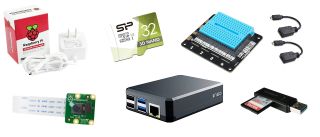
The Raspberry Pi 5, released at the end of October 2023 is now the flagship Raspberry Pi with much more power than the older Raspberry Pi 4. Raspberry Pi 5 stock levels are generally in good health. You now have a better chance of securing multiple Raspberry Pi 4 and the new Raspberry Pi 5 for MSRP. Once your have your Raspberry Pi, you'll need a few extra products to make the most of it. There's a whole world of accessories that help you make the most of the Raspberry Pi's GPIO. There are accessories which have been around since the Raspberry Pi was released, when it had just 26 GPIO pins (but don't worry as many of them will still work with newer models). Every week it seems that there are new accessories for our favorite single board computer. Using special add-on boards (HATs) we can take advantage of the Raspberry Pi's now standard 40 pin GPIO to control and interact with electronic components and create diverse projects such as robotics, machine learning and IoT and even our own home server.
The recent Raspberry Pi 5 release will undoubtedly see a slew of new accessories and add-ons for our favorite Single Board Computer. Right now we have a plethora of cases and coolers for the Raspberry Pi 5 under review. Some, like Argon's THRML 60-RC, ONE V3 M.2 and the THRML Active Cooler are ready for you to read, others are still a work in progress.
When searching for accessories for your Raspberry Pi 5, you really need to make sure that they are compatible. The GPIO may look the same, but some HATs no longer work and require a software workaround in order to be used. Confirm that the software for your chosen board will work before opening your wallet.
As with any computer, you’ll need a way to enter data and a way to see the interface, which usually means getting a keyboard, a mouse and a monitor. However, you can opt for a headless Raspberry Pi install, which allows you to remote control the Pi from your PC. In that case, the minimum requirements are:
- microSD card of at least 8GB, but the best Raspberry Pi microSD cards have 32GB or more. When you first set up a Raspberry Pi, you need to “burn” the OS onto it by using a PC, another Raspberry Pi or even a phone with microSD card reader.
- Power supply: For the Raspberry Pi 4, you need a USB-C power source that provides at least 3 amps / 5 volts, but for other Raspberry Pis, you need a micro USB connection that offers at least 2.5 amps and the same 5 volts. Your power supply provides power to both the Pi and any attached HATs and USB devices, so always look for supplies that can provide a higher amperage at 5 volts as this will give you a little headroom to safely power your projects.
In addition, there are a number of accessory and add-on types that protect your Pi, add new features and make everything a lot more useful and fun. These include:
- Cases: The best Raspberry Pi cases give you style, functionality and durability.
- HATs (aka add-on boards): The best Raspberry Pi HATs let you do everything from adding motors to creating LED light shows.
- Breakout Boards: To breakout the GPIO for easier access or to use via a breadboard. Essential for the new Raspberry Pi 400.
- Camera Modules: The Raspberry Pi has its own special camera port and there's a whole ecosystem of compatible camera modules for it.
- Cooling: Raspberry Pi 4 models in particular can get hot so fans and heatsinks help.
- Electronic parts: You can make great projects and have a lot of fun with motors, sensors, transistors and other bits and bobs. Just don't forget your breadboard!
- USB Drives: The Raspberry Pi 4 can boot from a USB hard drive / SSD giving us a speed boost, and a cheap means to add additional storage.
Overall, these are the best Raspberry Pi accessories that we have tested. No matter what your needs or project, you’ll definitely need some of these.
The Best Raspberry Pi Accessories You Can Buy Today
Why you can trust Tom's Hardware
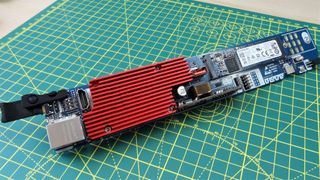
1. Compute Blade
Our expert review:
Reasons to buy
Reasons to avoid
The Raspberry Pi Compute Module 4 is a highly coveted board. It packs the best features of the Raspberry Pi 4, and onboard eMMC storage into a smaller package. The problem is that we need a carrier board in order to actually use it. There have been many carrier boards, but Uptime Lab’s Compute Blade is a “server on a stick”.
The form factor is long and narrow, the blade from which it is named. In this form factor we have space for an NVMe SSD, HDMI, USB A and C. Limited GPIO is the only issue here, but then if you are wanting to use this in the data center, connecting a load of LEDs is low down on your list of requirements. Onboard Gigabit Ethernet and additional micro SD storage make the Compute Blade a versatile board for Compute Module 4 and Lite variants.
The red anodized aluminum heat sink keeps the Compute Module 4’s SoC and RAM cool, while looking good. A fan header at the rear of the unit is designed to plug straight into a compatible fan, blowing air over the blade’s length.
In our review we determined that the Compute Blade is made for high density cluster computing, and it has been incredibly well thought out. Its design is based on function, with the form accommodating all of the features that we crave.
Read: Compute Blade Review
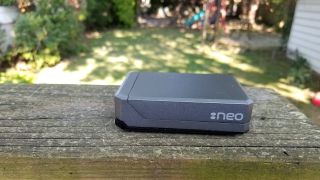
2. Argon Neo Case
Our expert review:
Reasons to buy
Reasons to avoid
The top overall choice on our round-up of the best Raspberry Pi Cases, the Argon Neo combines great looks with plenty of flexibility and competent passive cooling. This mostly-aluminum (bottom is plastic) case for the Raspberry Pi 4 features a magnetic cover that slides off to provide access to the GPIO pins with enough clearance to attach a HAT, along with the ability to connect cables to the camera and display ports. The microSD card slot, USB and micro HDMI out ports are easy to access at all times.
With the cover on or off, the Argon Neo provides solid passive cooling capability as an included thermal pad connects the Raspberry Pi 4's CPU to an aluminum plate to dissipate heat. You can also attach an optional fan HAT for active cooling. At just $15, this case is extremely affordable but cuts no corners.
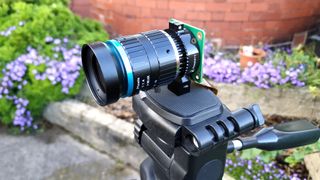
3. Raspberry Pi High Quality Camera
Our expert review:
Reasons to buy
Reasons to avoid
It doesn't come cheap, but the official Raspberry Pi High Quality camera offers the best image quality of any Pi camera by far, along with the ability to mount it on a tripod. The 12-MP camera doesn't come with a lens, but supports any C or CS lens, which means you can choose from an entire ecosystem of lenses, with prices ranging from $16 up to $50 or more and a variety of focal lengths and F-stop settings. We tested the High Quality camera with two lenses, one designed for close up shots, the other for more distant, the image quality was a massive improvement over the standard Raspberry Pi camera.
The Raspberry Pi High Quality camera plugs into the same CSI port on the Raspberry Pi as any other Pi camera module, but unlike the others, this one has a ¼ inch screw hole that allows you to attach it to any standard tripod or camera mount. If you care about image quality, the Raspberry Pi High Quality Camera is a must-have.
Read: Raspberry Pi High Quality Camera review
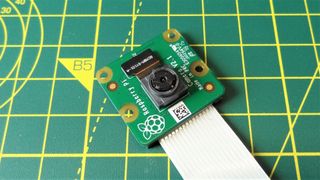
4. Raspberry Pi Camera Module V2
Our expert review:
Reasons to buy
Reasons to avoid
If you need a Raspberry Pi camera, but don't want to spend more than $50 on the high quality module and then have to bring your own lens, the official Raspberry Pi Camera Module V2 is the one to get. This 8-MP camera uses a Sony IMX219 sensor that gives it really solid image quality, records video at up 1080p, 30 fps and is a big improvement over the 5-MP OmniVision OV5647 that was in the V1 camera.
There are a number of third-party Raspberry Pi camera modules on the market, with some costing around $10 or less. However, most of these use the older, OV5647 sensor which provides far worse image quality.
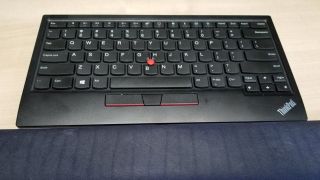
5. Lenovo ThinkPad TrackPoint Keyboard II
Our expert review:
Reasons to buy
Reasons to avoid
Whether you want to control your Raspberry Pi from the couch or you have it on a table and don't want to waste space, getting one of the best wireless keyboards is a good idea. It's particularly helpful to have a wireless keyboard with a pointing device so you don't need to also drag around a mouse.
Lenovo's ThinkPad TrackPoint Keyboard II is the best keyboard for Raspberry Pi thanks to its excellent key feel, multiple connectivity options and built-in TrackPoint pointing stick. The keyboard looks and types just like those on Lenovo's ThinkPad line of business laptops, offering plenty of tactile feedback and a deep (for a non-mechanical), 1.8mm of key travel. The TrackPoint pointing stick sits between the G and H keys, allowing you to navigate around the Raspberry Pi's desktop, without even lifting your hands off of the home row.
The Thinkpad TrackPoint II has both 2.4-GHz (via a dongle) and Bluetooth connectivity which you can toggle between using a hardware switch. So, if you have two Raspberry Pis or one Pi and one PC, you can switch back and forth with ease. Charging via USB-C, the keyboard promises up to two months of battery life on a charge.
Read: Lenovo ThinkPad TrackPoint Keyboard II review
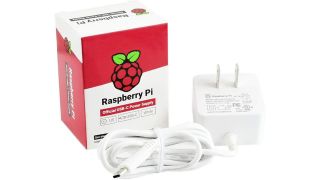
6. Raspberry Pi 4 Official Power Supply
Reasons to buy
Reasons to avoid
If you're going to use a Raspberry Pi 4, you need a USB-C power supply that offers at least 3 amps of juice with a 5-volt output. We've found that the best USB-C laptop chargers are capable of delivering this kind of power (albeit often with 4.8 - 4.9 volts, which still works), but if you don't have a powerful charger handy or need one just for your Pi, the official Raspberry Pi power supply is your best choice.
Rated for 5.1 volts at 3 amps, the official Raspberry Pi 4 power supply has good build quality and a nice design. Available in black or white, it's a small rectangle, emblazoned with the Raspberry Pi logo and a strong, built-in Type-C cable that's 59 inches (1.5m) long. Unlike some third-party competitors, it doesn't come with an on / off switch, but it is compatible with cheap on / off adapters you can attach to the end. You may find competitors for a few dollars less, but the official Raspberry Pi 4 power supply is a sure thing.
If you are shopping for any other Raspberry Pi, including the Raspberry Pi Zero or Raspberry Pi 3 or below, you'll need a power supply that outputs to a micro-USB port and only requires 2.5 amps and 5 volts. There's also an official Raspberry Pi charger for these older models.
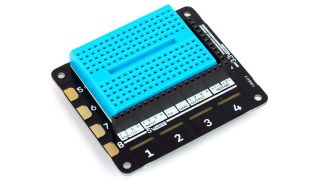
7. Pimoroni Explorer HAT Pro
Our expert review:
Reasons to buy
Reasons to avoid
The Raspberry Pi's 40 GPIO pins are arguably its most important feature. Using these pins (see our GPIO pinout), you can attach an entire universe of electronics, including motors, sensors and lights. There's a huge ecosystem of add-on boards, appropriately called HATs (hardware attached on top) that plug directly into the GPIO pins and matching the same layout as the Pi. These add on boards give you all kinds of added functionality, from LED light matrixes to touch screens and motor controllers for robotics projects.
Sitting at the very top of our list of Best Raspberry Pi HATs, each of which has a different purpose, the Pimoroni Explorer HAT Pro provides a smorgasbord of features that you can use in a wide variety of projects. While the Raspberry Pi doesn't come with an analog to digital converter like Arduino does (see Raspberry Pi vs Arduino), the Explorer HAT Pro provides four ADCs you can use with joysticks or potentiometers. It also packs two motor controllers, four colorful LED lights, four touch pads and four crocodile clips for attaching other electronics. Oh and it comes with a small breadboard you can stick on top and use for mounting and wiring electronics. Every serious Raspberry Pi fan should have one of these on hand.
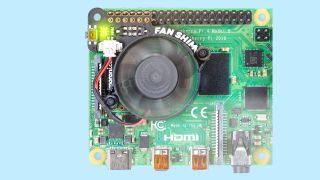
8. Pimoroni Fan Shim
Our expert review:
Reasons to buy
Reasons to avoid
If you're using a Raspberry Pi 4, you definitely need some kind of cooling, whether it's a heat sink, an aluminum with passive cooling built in or, best of all, a fan. The Pimoroni Fan Shim is powerful, easy-to-install and unobtrusive. You just push it down onto the left most side of your GPIO pin header and it does a fantastic job of cooling your Pi. You can even use a Pimoroni Fan Shim on a Raspberry Pi 4 that's been overclocked all the way to 2.1 GHz, without seeing any throttling.
You can just let the Fan Shim run all the time or you can download Pimoroni's software, which allows you to set temperature thresholds for it.
Read: Pimoroni Heatsink and Fan Shim Tested

9. Silicon Power 32GB 3D NAND microSD Card
Our expert review:
Reasons to buy
Reasons to avoid
Unless you've specifically configured yours to boot from an SSD (see our article on How to Boot Raspberry Pi from USB), every Raspberry Pi uses a microSD card as its primary storage drive. We maintain a list of the Best microSD cards for Raspberry Pi and have chosen the 32GB Silicon Power 3D NAND card as the top choice.
Unless you're hosting a media server or have a ridiculous amount of ROMS on a game emulator, a 32GB microSD card provides more than enough storage for Raspberry Pi OS and a ton of applications. The operating system and preloaded applications take up far less than 8GB by themselves.
In our tests, the Silicon Power 3D NAND microSD card had the fastest application open times and the best combination of random reads and writes. Considering that it's also less expensive than most 32GB cards and that its white surface provides a little room for you to write on it (with marker), this is currently the best card around.
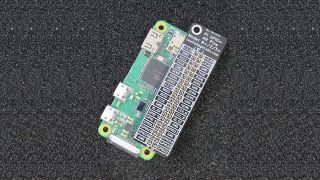
10. GPIO Reference Board
Reasons to buy
Reasons to avoid
Each of the Raspberry Pi's 40 GPIO pins has a different function so it's hard to keep track of which does what. For example, some of the pins provide I2C communication while others offer power and others are just for grounding. You can look at a GPIO pinout guide such as ours, but sometimes it's just easier to put the list of functions right on top of the pins.
GPIO reference boards are tiny, non-electronic headers that you place on top of the pins to show you which one has which name. There are many different brands and models for sale and all do pretty much the same thing so there's no need to be picky about which one you buy. Most have small holes on top that you can use to hang them on a keychain and take them wherever you go.
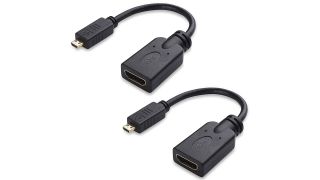
11. micro HDMI to HDMI Adapters
Reasons to buy
Reasons to avoid
While most of the earlier Raspberry Pi models have a single, full-size HDMI port, the Raspberry Pi 4 has dual micro HDMI ports that can each output to a monitor at up to 4K resolution. While there's a good chance you already have one or more HDMI cables lying around the house, most of us don't have micro HDMI cables, because it's a rarely used connector.
To connect the Raspberry Pi 4 to a screen, you'll either need a micro HDMI to HDMI cable or a micro HDMI to HDMI adapter you can connect an existing cable to. Cable Matters, a well-known and reputable brand, sells a pair of such adapters for just $10. That's much cheaper than a single micro HDMI to HDMI cable, which goes for $8 to 10 for just one. I've been using these Cable Matters adapters for more than a year now and they've worked really well.

12. Electronics Kit with Breadboard, Wires
Reasons to buy
Reasons to avoid
You can use your Raspberry Pi as a game emulator, a server or a desktop PC, but the real fun begins when you start connecting electronics to its GPIO pins. Of course, to even get started playing with GPIO connectors, you need some interesting things to connect to them such as lights, sensors and resistors (see resistor color codes).
The market is filled with electronics kits that come with a slew of LED lights, resistors, jumper cables, buttons and other bits and bobs you need to get started. Most importantly, all of these kits come with at least one breadboard, a white plastic surface filled with holes you can use to route and test circuits, no soldering required.
There are plenty of good kits from no-name brands on Amazon, but the Freenove LCD 1602 Starter kit caught our eye, because it comes with an ADC chip for analog-to-digital conversion, an LCD text screen and a GPIO extension board you can use to route all your pins over to the breadboard at once.
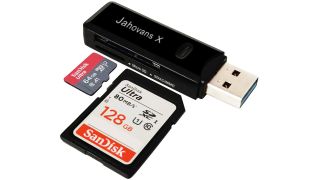
13. USB 3 microSD Card Reader
Reasons to buy
Reasons to avoid
In order to write Raspberry Pi OS (or a different OS) to a microSD card, you'll need some kind of microSD card reader that you can attach to your PC. Just about any make or model will do as long as it reads SDHC and SDXC cards and, preferably, connects via USB 3.0. I've been using the Jahovans X USB 3.0 card reader, which currently goes for $5.99, for almost a year now and it has worked really well.
You can also attach a microSD card reader to your Pi and use it to create a disk image backup of your Raspberry Pi.
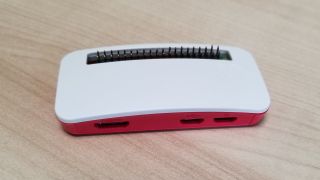
14. Raspberry Pi Zero Official Case
Our expert review:
Reasons to buy
Reasons to avoid
We're not huge fans of the Official Raspberry Pi 4 case, because it covers the GPIO pins and camera slots. However, the Official Raspberry Pi Zero case is a completely different as it comes with three different covers: one which has a camera hole (so you can make a Raspberry Pi body camera), another which exposes the GPIO pins and a third which covers the whole thing. The official Raspberry Pi Zero case also has the official burgundy and white colors of the Raspberry Pi Foundation.
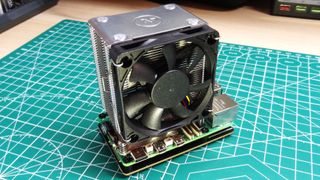
15. Argon THRML 60-RC for Raspberry Pi 5
Our expert review:
Reasons to buy
Reasons to avoid
The Raspberry Pi 5 needs cooling if you want to get the best from it. Argon Forty has released a plethora of Pi 5 cooling peripherals, and this $20 cooler looks more at home on Dominic Toretto's Dodge Charger than cooling the latest Raspberry Pi flagship.
The cooler is a mix of copper heat pipes, aluminum heatsink and a potent 60mm fan. The size is a downside, accessing the camera / display connections is awkward, as is GPIO access. There will be no direct HAT connections, you will need a breakout board.
The cooling performance is immense. We struggled to get the Raspberry Pi 5 up to a temperature that would trigger the fan. Yes, the passive cooling is good enough on its own. We did manage to trigger the fan and even overclocked to 3 GHz, the CPU only hit 36.7 degrees Celsius!
Great value cooler for your Raspberry Pi 5.
Read: Argon THRML 60-RC Review
Finding Discounts on the Best Raspberry Pi Accessories
Whether you're shopping for one of the best Raspberry Pi accessories or one that didn't quite make our list, you may find savings by checking out the latest SparkFun promo codes, Newegg promo codes, Amazon promo codes or Micro Center coupons.
Stay On the Cutting Edge: Get the Tom's Hardware Newsletter
Get Tom's Hardware's best news and in-depth reviews, straight to your inbox.
-
zintoki Just got Argon One. It's really beautifull case but can't cool RPI4B @2ghz for 20mins on full load. Cheapest Chinese case with heatsinks and fan all for 4USD have much better performance.Reply -
CooliPi Strange. See https://magpi.raspberrypi.org/articles/group-test-best-raspberry-pi-4-thermal-cases-tested-and-rankedIt should have enough power to cool it, albeit with the help of a fan. Does it have proper thermal contact?Reply
If you need more performance... well.. look at the only other case that beat it in that review.
There's some other comparison over here:
https://github.com/nschloe/stressberrybut be warned, it doesn't record ambient temperatures, which adds an offset. Hard to compare exactly.
And if you are after some extreme cooling, see this
RbzKM5XxlOAView: https://youtu.be/RbzKM5XxlOA
Have fun ;)
Just FYI, I have my RPI4 4GB (or a second one with 8GB) OC'ed to 2100MHz, over_voltage=6, core at 550MHz. Typical temperature deltas:
Idle - 10°C
Firefox running - 14°C
Max load (stress-ng or linpack) - 22°C
All passive, not with that 60mm Noctua fan. It slashes it even more.
